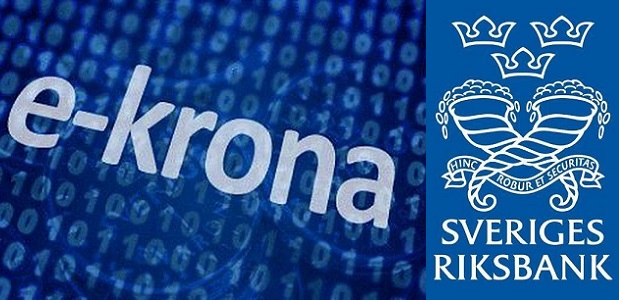
In partnership with Accenture, the Riksbank is conducting a pilot project to develop a proposal for a technical solution for an e-krona that can work as a complement to cash. The main aim of the pilot is for the Riksbank to increase its knowledge of a central bank-issued digital krona.
The Riksbank announced that the project is now being extended to the end of February 2022. The aim for the coming year is to continue developing the technical solution, with the focus on performance, scalability, testing of off-line functions and bringing external participants into the test environment.
There is currently no decision on issuing an e-krona, how an e-krona might be designed or what technology might be used.
Meanwhile, in a new staff memo – On the possibility of a cash-like CBDC – Riksbank says that any e-krona – whether account-based or token-based – would require registers behind them to keep track of who owns the money.
Digital central bank currencies would not function offline and anonymously in the same way as cash. This is the conclusion drawn by the authors of the Staff Memo.
Digital central bank currencies are money that can either be held in an account with the central bank (account-based) or as digital units of value (token-based). Both types of digital central bank currency require, however, that there are one or more registers behind them, keeping track of who owns the money.
The link to these registers means that neither the token-based nor the account-based money can offer the same anonymity as cash, as the transactions will be traceable. Nor will offline payments, where there is no communication with the register, be possible to any great extent. A token-based CBDC does not appear to have a greater capacity to fully replicate cash than an account-based one in this respect.
According to Finextra, the analysis contrasts with a recent Visa technical paper that outlines a novel approach for offline point-to-point payments between two devices, touting it as a means for central banks to replicate the physical exchange of cash using digital currencies.
The protocol outlined by Visa allows digital money to be directly downloaded onto a personal device, such as a smartphone or tablet. The money is stored on a secure hardware embedded in that device and managed by a wallet provider.
CBDC can be transacted from one device to another device directly without any intermediaries such as banks, payment networks, or payment processors by using Bluetooth and Near Field Communication.
RELATED CONTENT
Banking 4.0 – „how was the experience for you”
„To be honest I think that Sinaia, your conference, is much better then Davos.”
Many more interesting quotes in the video below: